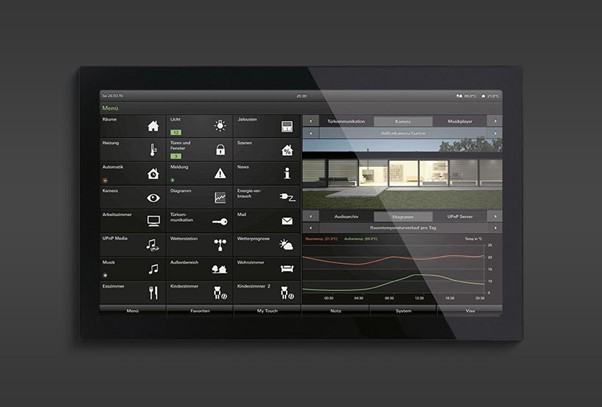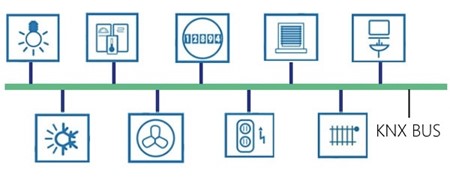Building Management Systems or BMS, have become a fundamental element of modern commercial and industrial buildings. The development of such requirement has been brought on by the need for energy conservation, ease of facility management and compliance with building regulations.
The former common approach to BMS was to control Lighting, HVAC, Shading and Security, via separate specialist contracts, whereas a modern all-encompassing KNX BMS solution would provide for much greater monitoring and control. In addition, a KNX solution can also integrate specialist controls across multiple other protocols, such as for example: a Fire Alarm System and a Window Actuator as part of a SHEV System.

KNX has been globally recognised for many years as ‘the worldwide standard for home and building control’ and is increasingly becoming the BMS solution of choice for specifiers and developers involved in commercial projects.
It should be recognised that the global market plays host to any number of Building Management Systems and whilst many can accomplish large elements of the BMS requirement, KNX still remains supreme with good reason:
- KNX can directly control all elements of building services, including Lighting, Power, access, HVAC and security
- KNX is heavily focussed on security with encryption across its entire typology (IP, TP & RF) and a fast growing enthuse on security at device level also
- KNX has protocol translation solutions meaning a deep level of integration with any number of solutions, for example: KNX to BACNET
- KNX has certified Gateway solutions to cater for all elements of building services, for example: DALI Master Gateways that sit on the KNX BUS as opposed to interfacing with a separate DALI Master installation for lighting
- KNX provides the option to have a sole controls specialist for all building services as opposed to a system-specific specialist for each system, such as for instance, Lighting, Power, Access. Blinds HVAC controls, security, etc. In addition to the improved level of joined-up coordination of systems, a sole specialist usually results in reduced maintenance costs.

Of course, the benefits of a KNX BMS extend much further, including:
- Advanced Topology of up to 1000M and 256 devices in a single line, up to 15 Lines per area and 15 areas per project providing a possibility of up to 57,600 KNX individual devices in a single project.
- The KNX SELV BUS Cable provides power and data to each KNX device across one twisted pair, thus simplifying cabling infrastructure throughout any building
- KNX offers a full suite of advanced functions including Timers, Logic, Scenes and secure remote access to cater for the specific lighting, HVAC and Security, control, etc. requirements of any building
- KNX has 8000+ certified products available from 500+ manufacturers, all of which are fully compatible under the KNX open-source non-proprietary standard
- KNX is future proofed, flexible and scalable
In conclusion, KNX offers a future proof and versatile Building Management Solution that gives the building owner a clear advantage over other proprietary BMS systems. KNX, with its global network of System Integrators, gives specifiers the means to technical information and contractors the means to competitively tender works that will ultimately be carried out by KNX trained and certified Integrators.

